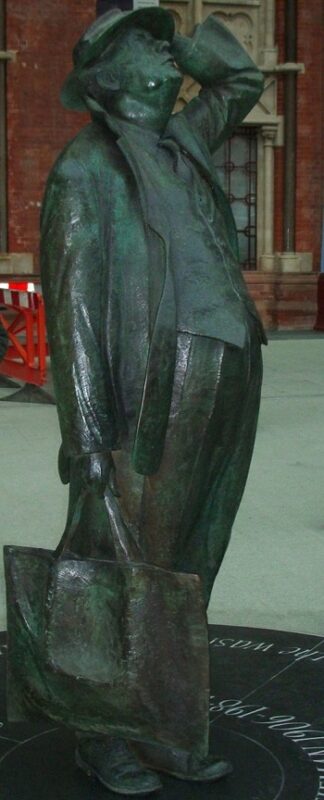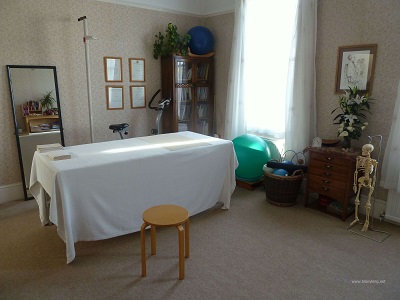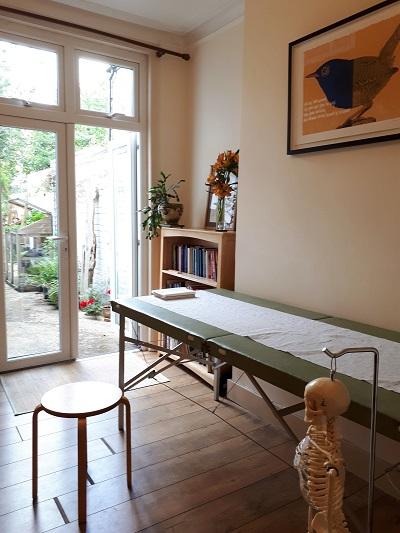Inhibition is an important concept that is one of the corner-stones of the Alexander Technique and its learnt, conscious application, helps to differentiate the Technique from other forms of body work. However it is necessary to clarify the actual meaning of the word as Alexander understood it, not least because the term ‘inhibition’ is also used by psychotherapists but rather differently. This is illustrated by Reber (Penguin Dictionary of Psychology) who suggests that ‘although some analysts will use the term interchangeably with suppression (and even occasionally with repression), such practises are not recommended. In the classical theory inhibition is used as equivalent to prevention’. It is as prevention, as the conscious act of choosing to stop a movement, which is the way Alexander used the term inhibition.
How do we use inhibition, within the Alexander Technique?
One example is the use of inhibition to stop the habit that many people have, of crossing their legs whilst sitting. First, let me explain why we might want to stop this habit. This position, with one knee hooked over the other, tends to twist contract and curve the spine and when done repeatedly can distort muscles and damage our intervertebral discs. This process can develop a curvature of the spine and contribute to problems such as sciatica. Even if someone can remain poised with both sitting bones supporting them – as Alexander himself does in one photo – the pressure behind the knees will still interfere with the circulation of our blood.
It often takes a while to stop even such an obvious habit. Most people begin by noticing they have crossed their legs after doing so, then they uncross them – and repeat this process over and over again. More effective is to be pro-active, to be aware of this habit and to recognise when we are about to cross our legs – then we can inhibit, before making that action. In this way we stop the urge to cross our legs and reduce the risk of causing problems to our spines. In Alexander lessons, we learn to inhibit such habits of mis-use and also learn to direct ourselves to move differently, freely lengthening to avoid compressing the spine, whatever we are doing. In this way, many people learn to gain some control over problems such as sciatica and backache, reducing or even eliminating the pain.
A more subtle and very common habit that is addressed in Alexander lessons, is that of contracting our neck muscles, which interferes with our poise and general functioning. Most of us have this habit but are not aware of it unless, for instance, we react to stress with tension that results in headaches and back pain. Many people with such problems come to Alexander lessons, because they sense their habits and poor posture are contributing to, or even causing, their discomfort. However, although they realise some ways they mis-use their bodies, they usually find their habits are either too strong, or not in their conscious awareness, for them to make the necessary changes on their own. This is where the Alexander Teacher can help.
The learning process
Before we can bring about changes in the way we use ourselves, we need to be aware of thoughts and habits of mis-use which interfere with the way our body naturally functions. With the help of the teacher’s instructions, plus her gently guiding hands, our awareness is drawn, for instance, to the fact that we tend to contract our neck muscles in reaction to a stimulus – even such a simple one as making the decision to stand up. Most of us stand in an unconscious manner, end-gaining and focusing on the goal of standing, without any awareness as to the way we move, or to the fact that we contract our neck muscles and concertina our spines in the process.
However, with the Alexander teacher’s help, we can learn to recognise where, when and why we repeat that pattern. Although many of our habit patterns are similar to those of other people, we each have our own unique version to learn about. As Alexander put it we ‘translate everything, whether physical or mental or spiritual, into muscular tension’ Aphorisms
Once we recognise our habits, we learn to be pro-active, to inhibit our mis-use just before making an action, thereby creating a brief pause in which we are ‘in neutral’. Once learnt, the process of inhibition can take place very quickly, allowing us the possibility of choosing whether or not to make an action and if we do, thinking through how to do it.
This process finds some support from Benjamin Libet’s research into conscious awareness, in the 1970s. Libet found that it takes about 500 milliseconds for our muscles to respond to a signal from the brain ordering it to move but that it was possible, in the last 100 milliseconds, for our conscious awareness to veto or inhibit the intended movement, if we choose.
Inhibition can liberate us from our old habits, so that we can choose how to act:
- We can do our usual thing, ruled by our patterns of use (or mis-use) that we’ve developed throughout our life
- We can give ourselves specific learnt directions, to move and act in a new way, freely lengthening and expanding.
Alexander put the concept of inhibition very simply, when he said to a pupil:
‘Like a good fellow, stop the things that are wrong first.‘
FM Alexander ~ Aphorisms ~ Mouritz 2000
In ‘The Use of the Self’ Alexander outlines the principles of the Technique he developed over a number of years, as a result of researching his own vocal problems . He describes how he patiently observed himself whilst reciting and he learnt to recognise his own faulty use that had threatened his acting career. Alexander describes the process he went through, as he unravelled his patterns of mis-use and began to learn how he could inhibit them, which freed him up so that he could then change the way in which he used his voice:
‘It occurred to me that if, when the stimulus came to me to use my voice, I could inhibit the mis-direction associated with the wrong habitual use of my head and neck, I should be stopping off at it’s source my unsatisfactory reaction to the idea of reciting, which expressed itself in pulling back the head, depressing the larynx, and sucking in breath’. (p 24)
Eventually, after much trial and error, Alexander learnt to let go of his old habits.
‘After I had worked on this plan for a considerable time, I became free from my tendency to revert to my wrong habitual use in reciting, and the marked effect of this upon my functioning convinced me that I was at last on the right track, for once free of this tendency, I also became free from the throat and vocal trouble and from the respiratory and nasal difficulties with which I had been beset from birth.’ (p 36)
Alexander also describes his work with teaching a golfer the Alexander Technique. He describes how the pupil, once he had learnt to inhibit, could begin to give himself directions in order to bring about a new way of using himself when making a movement.
‘By the inhibition of the misdirected habitual use, the way would be left clear… to build up… that new direction of the use of his mechanisms… which would constitute the means whereby he would in time be able to… make a good stroke.’ (p 58)
F M Alexander ~ The Use of the Self ~ 1932 ~ Centerline / Gollancz / Orion Press
Inhibition can also be applied to our thinking and mental states.
The author and philosopher Aldous Huxley, in his book Ends and Means, explores the ‘Nature of Ideals’ and postulates that ‘the ideal man is the non-attached man’. We might question his bold statement that ‘it is pretty clear that non-attachment is very hardly realisable by anyone whose body is seriously mal-adjusted’ because ‘what happens in the body happens in the mind’ (p 220). It is true that our minds and bodies interact and function as one psychophysical unit, so that our bodies express our thoughts and feelings and for many of us, this statement could apply. However, this surely would not be the case for people with organic problems which are not expressions of the way they are in themselves and over which they have little or no control.
In order to attain this state of non-attachment, Huxley states that awareness and inhibition are required and that ‘the technique of inhibition needs to be learnt on all the planes of our being’. He suggests that if we can learn to apply inhibition to the way we use our body, this will influence our thoughts and emotions because ‘our mind and body are organically one’. Huxley, who had lessons with F M Alexander, goes on to say that the Alexander Technique can lead to a ‘general heightening of consciousness on all levels’ and that it offers us ‘a technique of inhibition, working on the physical level to prevent the body slipping back, under the influence of greedy ‘end-gaining’, into its old habits of mal-co-ordination, and working … to inhibit undesirable impulses…. on the emotional and intellectual levels.’
As Huxley put it ‘We cannot ask any more from a system of physical education: nor, if we seriously desire to alter human beings in a desirable direction, can we ask any less.’ (p 224)
Aldous Huxley ~ Ends and Means ~ 1937


